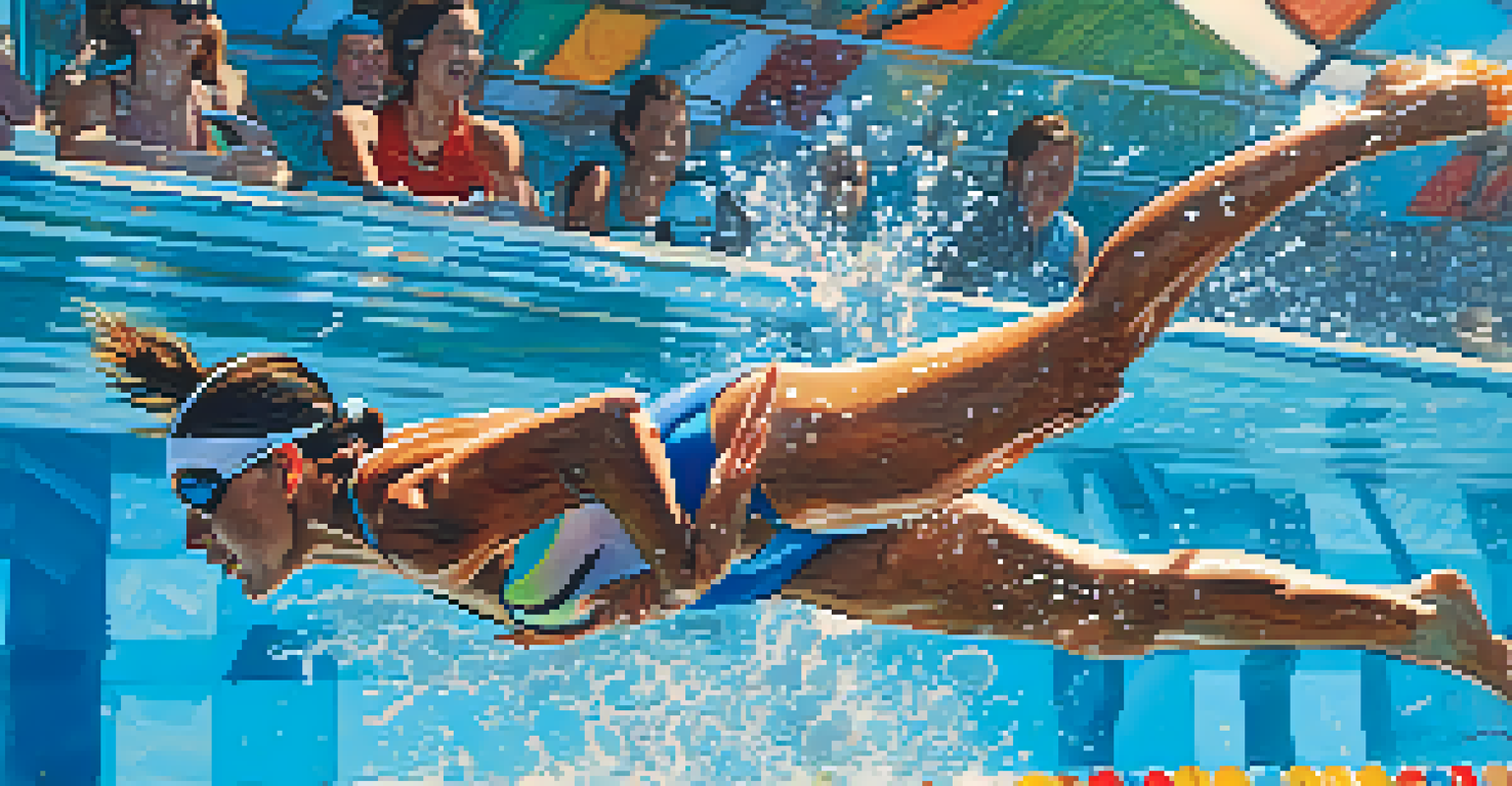Understanding Tendon Injuries in Athletes: Causes and Care

What Are Tendon Injuries and Their Types?
Tendon injuries are common among athletes and can significantly impact performance. These injuries often occur in the muscles and connective tissues that attach muscles to bones. The most frequent types include tendonitis, which is inflammation of the tendon, and tendon tears, which can be partial or complete.
In sports, the injury is often not the problem; it's the recovery that becomes the challenge.
Tendonitis typically develops gradually, often due to repetitive strain from activities such as running or tennis. On the other hand, tendon tears may occur suddenly due to a high-impact event or an awkward movement. Understanding these types helps athletes recognize symptoms early and seek appropriate care.
It's important to note that tendon injuries can affect various parts of the body, including the Achilles tendon in the heel, the patellar tendon in the knee, and the rotator cuff in the shoulder. Each type has its own set of risks and recovery protocols, making awareness crucial for prevention.
Common Causes of Tendon Injuries in Athletes
Several factors contribute to tendon injuries, with overuse being one of the most significant. Athletes who train intensively without adequate rest may put excessive strain on their tendons, leading to inflammation or tears. Additionally, improper technique during training or competition can exacerbate this risk.

Another common cause is a sudden increase in activity level. For instance, an athlete who suddenly ramps up their running distance or intensity may find themselves more susceptible to tendon injuries. This emphasizes the importance of gradual progression in any training regimen.
Types of Tendon Injuries Explained
Tendon injuries mainly include tendonitis and tendon tears, affecting various body parts and requiring tailored recovery protocols.
Environmental factors, such as playing surfaces or weather conditions, can also play a role. Running on hard surfaces or in wet conditions can increase the likelihood of slips and falls, potentially resulting in acute tendon injuries. Being aware of these factors can help athletes make safer choices.
Recognizing Symptoms of Tendon Injuries
Identifying the symptoms of tendon injuries early can make a significant difference in recovery time. Common signs include pain localized around the tendon, swelling, and stiffness, especially after activity. Athletes may also experience a decreased range of motion or weakness in the affected area.
The body achieves what the mind believes.
In some cases, a popping or snapping sensation may accompany tendon tears, indicating a more severe injury. It's crucial for athletes to listen to their bodies and not ignore persistent pain, as that could lead to long-term damage. Early intervention can often prevent more severe complications.
If symptoms arise, it's advisable to seek medical attention promptly. A healthcare professional can perform diagnostic tests, such as ultrasounds or MRIs, to assess the extent of the injury and recommend an appropriate treatment plan tailored to the athlete's needs.
The Importance of Rest and Recovery
Rest is an essential component of recovery from tendon injuries. Athletes often feel pressure to return to their sport quickly, but neglecting recovery can lead to chronic issues. Taking time off allows the body to heal and reduces the risk of re-injury.
During recovery, incorporating rest days into training schedules is crucial. This doesn’t mean complete inactivity; instead, athletes can engage in low-impact activities that do not stress the injured tendon. For example, swimming or cycling can help maintain fitness while allowing the tendon to recover.
Key Causes of Tendon Injuries
Overuse, improper technique, and sudden increases in activity levels are significant contributors to tendon injuries in athletes.
Listening to the body and recognizing signs of fatigue is equally important. Athletes should be mindful that pushing through pain can hinder recovery and lead to long-term damage. A balanced approach to training and rest can significantly enhance athletic performance in the long run.
Effective Treatment Options for Tendon Injuries
Treatment for tendon injuries varies depending on the severity and type of injury. For mild cases, rest, ice, compression, and elevation, often referred to as the RICE method, are effective initial treatments. Over-the-counter pain relievers can also help manage discomfort during recovery.
More severe injuries may require physical therapy, focusing on rehabilitation exercises to restore strength and flexibility. A physical therapist can design a personalized program to gradually increase load on the tendon, ensuring safe recovery. In some cases, advanced treatments like corticosteroid injections or platelet-rich plasma (PRP) therapy may be recommended.
Surgery is generally considered a last resort for severe tendon tears that do not respond to conservative treatments. Surgeons can repair torn tendons and restore functionality, but recovery from surgery often involves a lengthy rehabilitation process. It's crucial for athletes to follow their healthcare provider's advice closely during this period.
Preventing Tendon Injuries: Tips for Athletes
Prevention is key when it comes to tendon injuries, and athletes can take several proactive steps. One effective strategy is to incorporate a proper warm-up routine before training or competition. Warming up increases blood flow to the muscles and tendons, preparing them for the physical demands ahead.
Additionally, athletes should focus on strength training to support their tendons better. Stronger muscles can help absorb shock and reduce the strain on tendons during high-impact activities. Exercises that target flexibility and balance can also aid in injury prevention, promoting overall athletic performance.
Importance of Early Intervention
Recognizing symptoms early and seeking professional help can prevent long-term damage and facilitate a quicker recovery.
Finally, it’s important to pay attention to body mechanics and technique. Athletes should seek guidance from coaches or trainers to ensure they are using proper form, which can minimize the risk of injury. By making these preventive measures part of their routine, athletes can enjoy safer, more effective training.
When to Seek Professional Help for Tendon Injuries
Knowing when to seek professional help is crucial for athletes dealing with tendon injuries. If pain persists for more than a few days despite rest and home care, it’s time to consult a healthcare professional. Early intervention can prevent further complications and ensure proper healing.
Additionally, if there is significant swelling, bruising, or inability to bear weight on the affected limb, immediate medical attention is necessary. These symptoms may indicate serious injuries that require prompt assessment and treatment. Ignoring these signs can lead to chronic issues that could sideline an athlete for an extended period.

Athletes should also be aware of their own limitations. If they have a history of tendon injuries, they should be vigilant about any recurring symptoms. A healthcare provider can offer tailored advice on managing their condition and designing a safe return-to-sport plan.